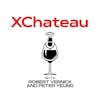Mapping Flavor Profiles for Wine w/ Katerina Axelsson, Tastry

Frustrated by a lack of understanding of consumer taste preferences and a lack of data-driven decision-making about winemaking, Katerina Axelsson, CEO and Co-Founder of Tastry, built an AI and chemical analysis system to solve this. With custom-built algorithms that take chemical analysis and develop flavor profiles and a database of consumer taste preferences that map to the US’s 248M adults, Tastry is paving a new, innovative way to use data to make and market wine.
Detailed Show Notes:
Tastry was founded around 6 years ago, but 1st 4 were more of an R&D project, officially launched Dec 2021
- The wine industry is trying to anticipate what consumers want
- New wines have an 85% failure rate in the 1st year
- People describing flavors in wine doesn’t correlate with if they like it
Tastry uses AI and Machine Learning with chemical analysis to break down a wine’s flavor
2 databases - wine’s flavor profile and consumer taste preferences that are matched together
Wine database
- Analyze 10,000’s of wines/year
- Chemical analysis is done in-house on standardized equipment but with proprietary software
- The Top 2,000 wines based on IRI annually are analyzed to build a baseline data set as wineries’ samples are proprietary
Consumer taste database
- Did double-blind tasting panels, asking consumers if they both liked or did not like wines; the negative preference is important for the flavor profile building
- Consumers also asked analog questions that became the Recommended by Tastry quiz
- Use algorithms to relate data and predict preferences for the rest of the population (248M taste profiles)
- Can now predict individual consumer taste profiles if they take the Tasty quiz with 93% accuracy in how they would rate the wine
- Palates are very unique; the largest cohort is only 13 people
- Demographics don’t show a lot of differences in taste preferences
Customers - work with >100 wineries, 22 of 25 largest wineries
Winemaker use cases
- Computational Blending - uses simulation to match profiles from different blends and adjustments; winemakers set parameters on what they are trying to achieve
- Winery had to switch from barrels to adjustments to 5x production and used blending to get a similar profile
- Navigating smoke taint (3k tons, $10M worth of fruit) - came back with a recipe that solved the issue
- Maintaining year-over-year consistency
Winery marketing use cases
- Recommended by Tastry plug-in for wine clubs
- Look more at finished wines and at competitive sets and overlap of consumer preferences
Retailer use cases
- Recommender helps get more niche brands discovered
- There is more traction for e-retailers now; pilots with big box retailers
- Dec 2023 - Tastrt will announce a scalable way to access a broad # of wines
Strong ROI - 44-215x, benefits mainly cost savings, increased revenue
Business model - Vertical SaaS with consumption-based model
- Subscription to dashboard
- Lab analysis of samples provides ~$3,000 worth of analysis for a $370 list price
- Compublend - per simulation charge
- Access to competitive data sets from the Top 2,000 wines
- Pricing is the same for winemakers, marketing, and retailers
Raised ~$10M in funding from individuals, early stage VC’s, and strategic investors (wine, AI, retail)
Hosted on Acast. See acast.com/privacy for more information.







